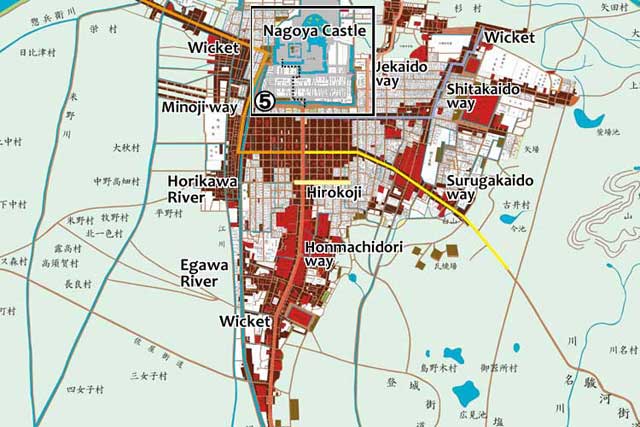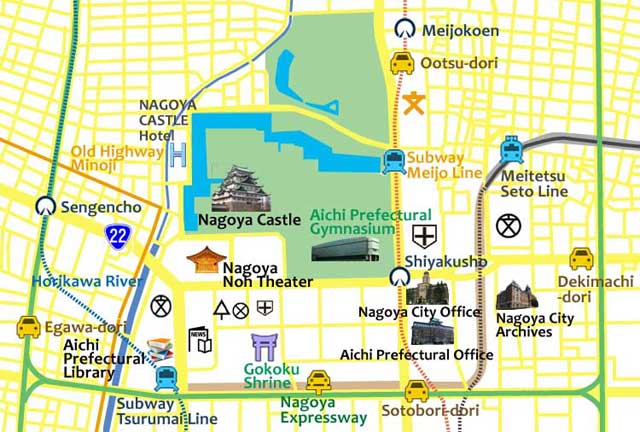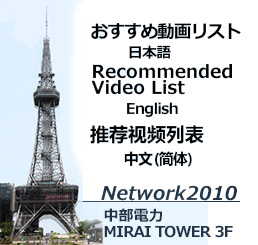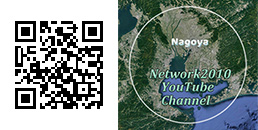Nagoya Castle Town of the Edo period(1603-1868)

Ad banner inquiry----info@network2010.org

The circumference of Nagoya Castle(present)

History
The mansions of the important vassals of the Owari feudal domain were put on Sannomaru(South in Nagoya Castle) in the Edo period. Moreover, the Kameo-Tennoh shrine, Nagoya Toshogu shrine, and the mausoleums of the past feudal lord were placed. It was that townspeople were able to go into Sannomaru only at the festival time..
The important vassal's mansions etc. were destroyed and barracks etc. were built. From 1911 to 1976, the train of the Meitetsu Seto line was running along the inside of the outer moat.
Some armies transferred in a suburb at the beginning of Showa Era(1926-1989). Nagoya City Hall and Aichi Prefectural Office relocated to the former site, and it is designated as National important cultural properties now.
The institution in zone 5
Aichi Prefectural Library
Aichi Prefectural Library is an Aichi prefectural public library over which Aichi Arts Center has jurisdiction. Now, it has a seating capacity of about 1,600,000 volumes.
Nagoya Noh Theater
It opened to on the south of Nagoya Castle in 1997. Traditional performing arts, such as a Noh(the oldest of Japan's theatrical arts) play and kyogen(the traditional comedy of Japan), It is the greatest Noh theater with 630 seats in domestic. are performed.
Aichi Prefectural Gymnasium
It is used as halls, such as a sport, an event, and a concert. It is in Nagoya Castle and Nagoya Grand Sumo Tournament is held every year
Nagoya city office
It was completed in 1933 and designated as National Important Cultural Properties in 2014. The structure which put the roof of the castle is called Teikan-yoshiki style, and is used as a location site of television or a movie.
Aichi prefectural office
It was completed in 1938 and designated as National Important Cultural Properties. The design of Teikan-yoshiki style same with Nagoya City Office is characteristic.
Nagoya City Archives(National Important Cultural Properties)
Nagoya City Archives was built as a court in 1922. It has the appearance of a neo-baroque style and has become a precious cultural heritage of Nagoya. Now, it is used as the Public Record Office of Nagoya City.


